To Shoot A Kite
July 5 - August 2, 2014 | CUE Art Foundation, New York
Artists & Projects:
Julie Green, Ashley Hunt, Lucky Pierre, Prison and Neighborhood Art Project (P+NAP), Sarah Ross, Dread Scott, Jackie Sumell, Tamms Year Ten, and Temporary Services
Overview:
Over the past two decades, the U.S. prison population has increased by 700%, even though our total population has grown by only 20%, and our crime rate has decreased. With over two million incarcerated people, we lock away more individuals per capita than any other country that publishes these statistics. In prison-speak, a 'kite' represents notes or letters, and 'to shoot a kite' means to send a message. The exhibition To Shoot A Kite includes projects that represent the work of a select group of artists who have set out to relay the severe conditions of U.S. prisoners and expose our broken justice system. In so doing, they are re-framing the narrative surrounding the incarcerated—providing a platform for public expression and advocating for change both from within and out of the prison system. Each project takes on a different form – from documentation and data visualization to offering services and advocacy – which provides a link between the incarcerated and the outside world, portraying their conditions, and personalizing the abundant, yet anonymous data about the prison system.
*This exhibition is accompanied by a catalogue with essays by Yaelle Amir, Ashley Hunt, and Lilly Lampe. To obtain a copy, contact CUE Art Foundation.
* View a walk-through video of the exhibition by following this link.
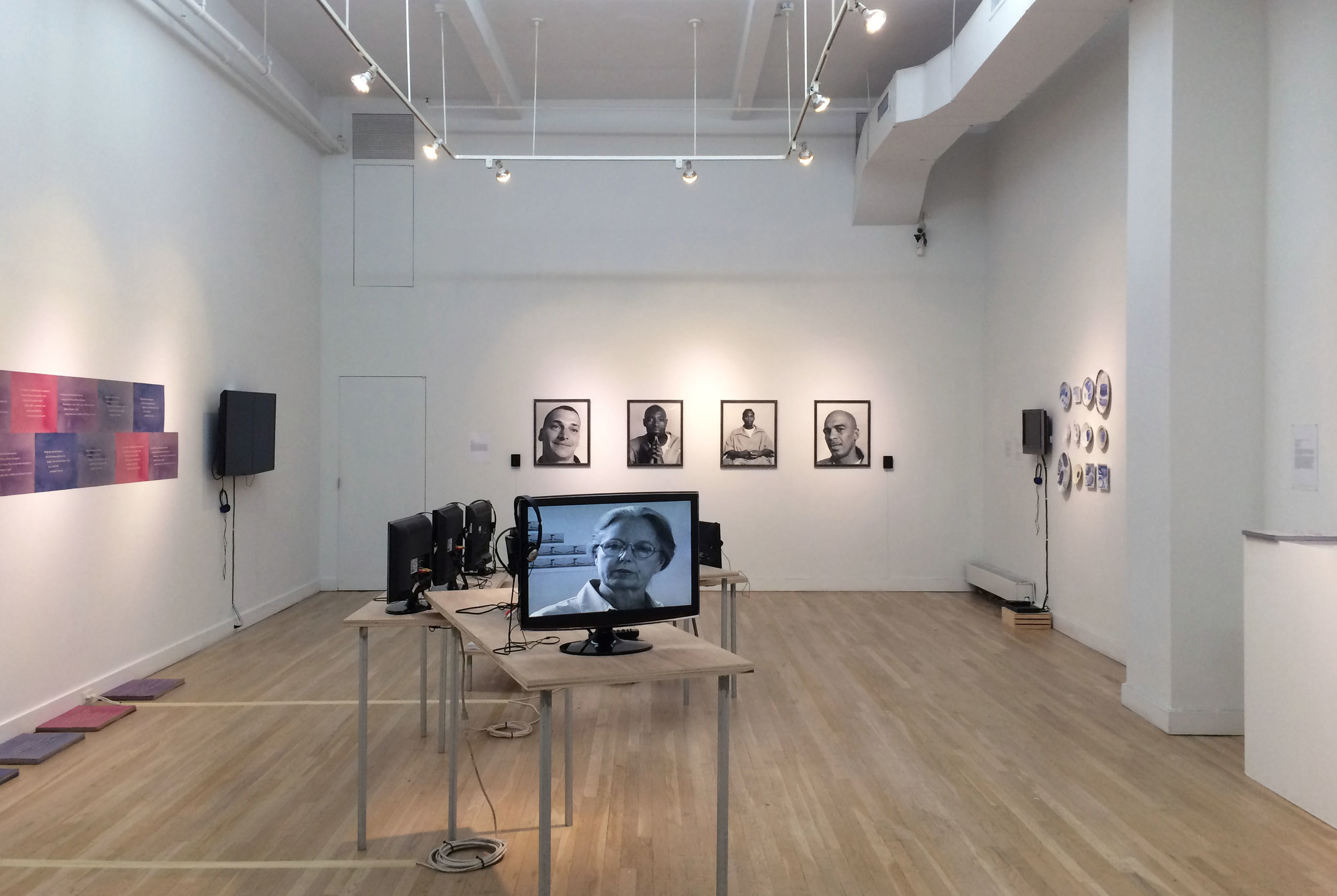

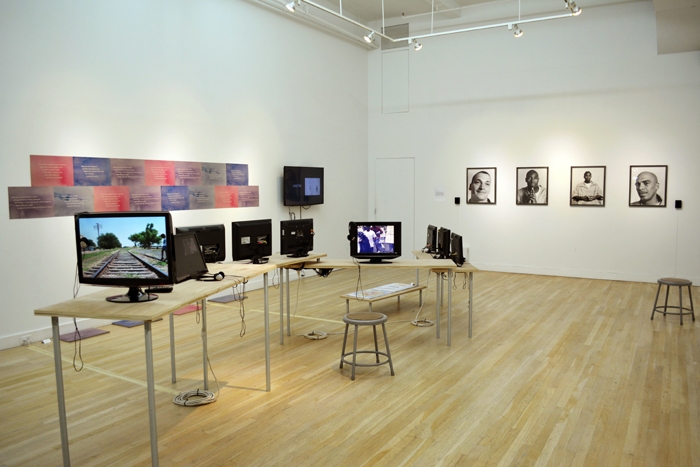
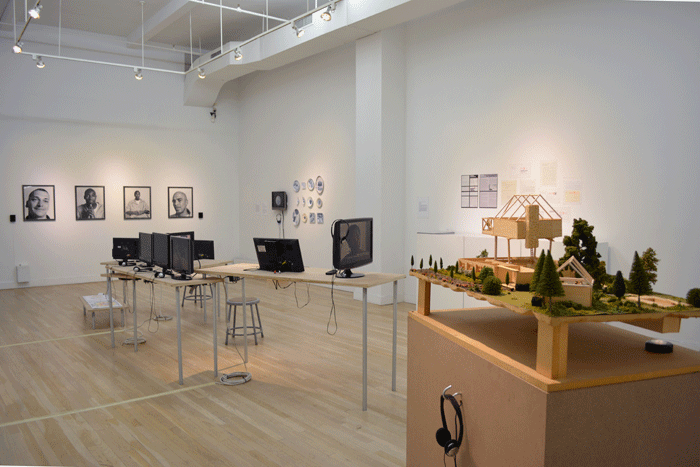
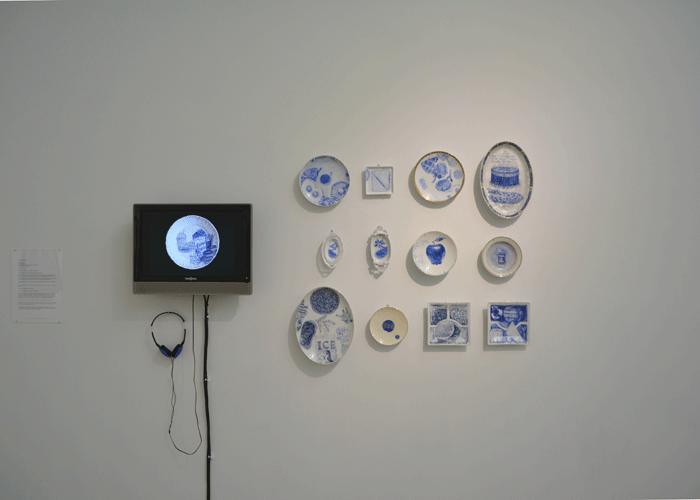

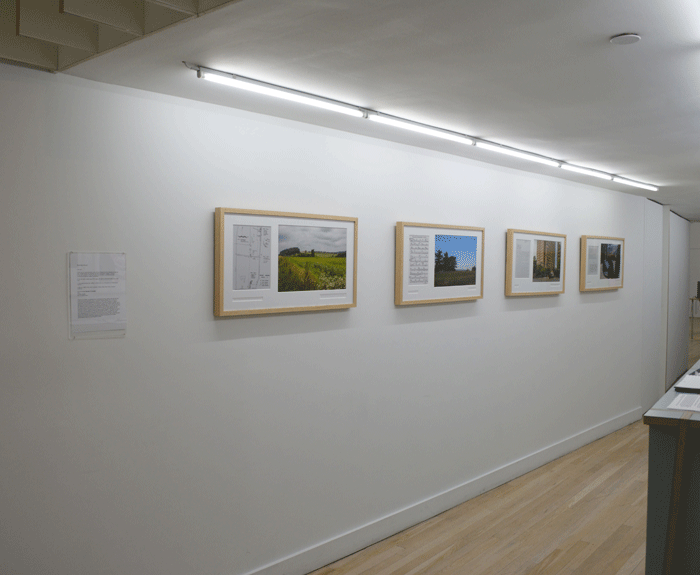
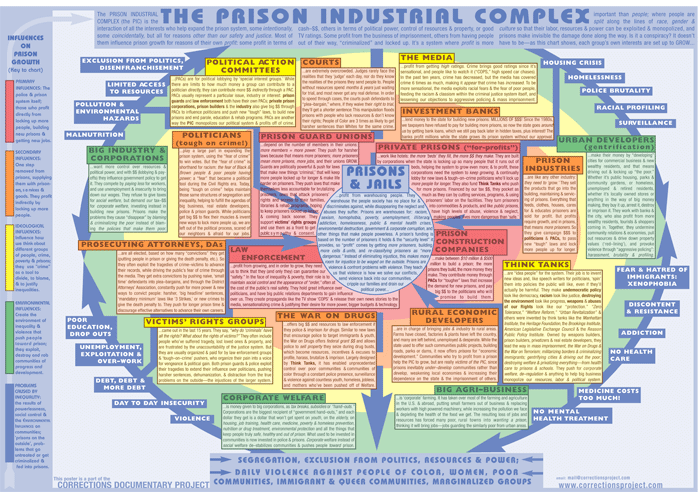
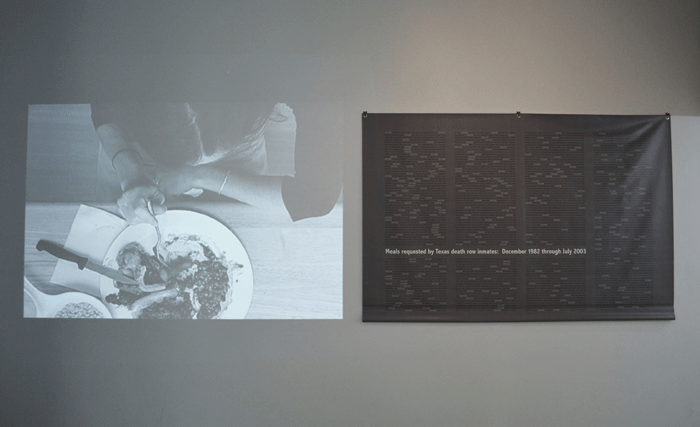
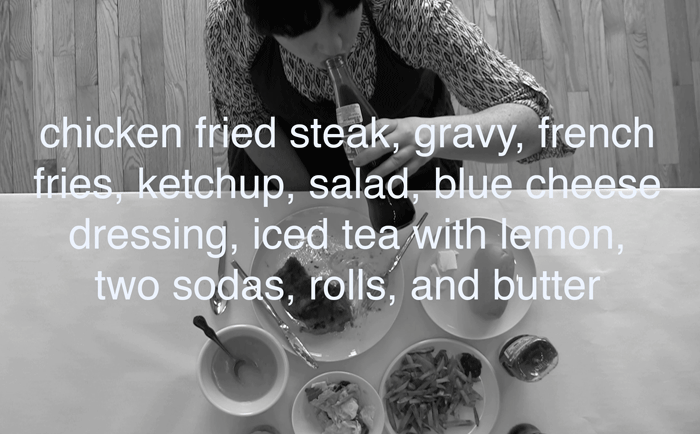
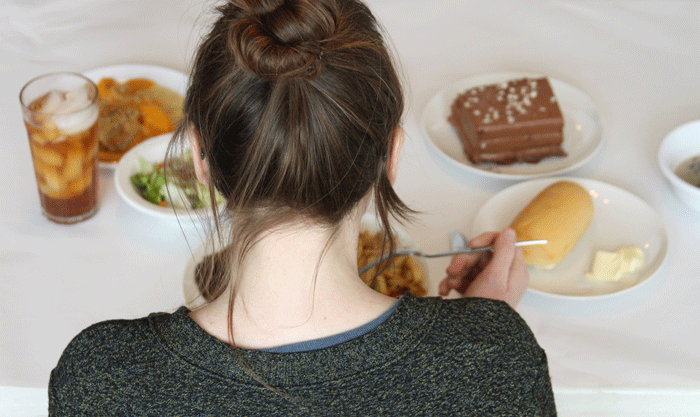
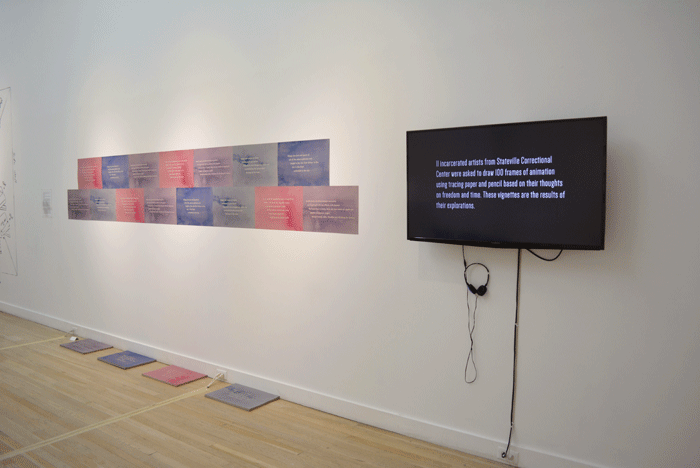
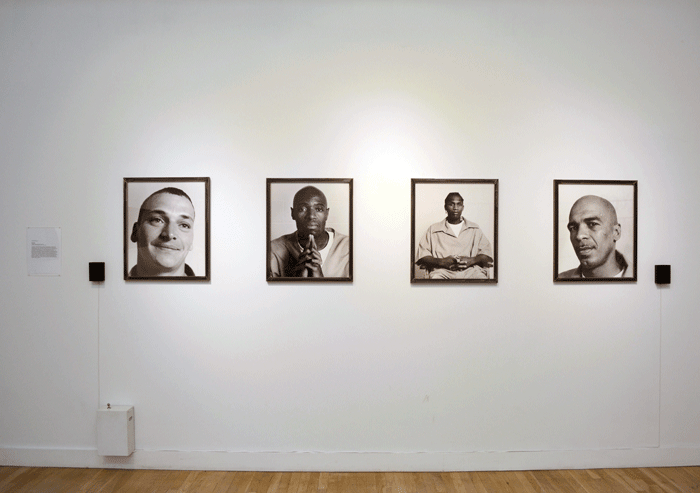





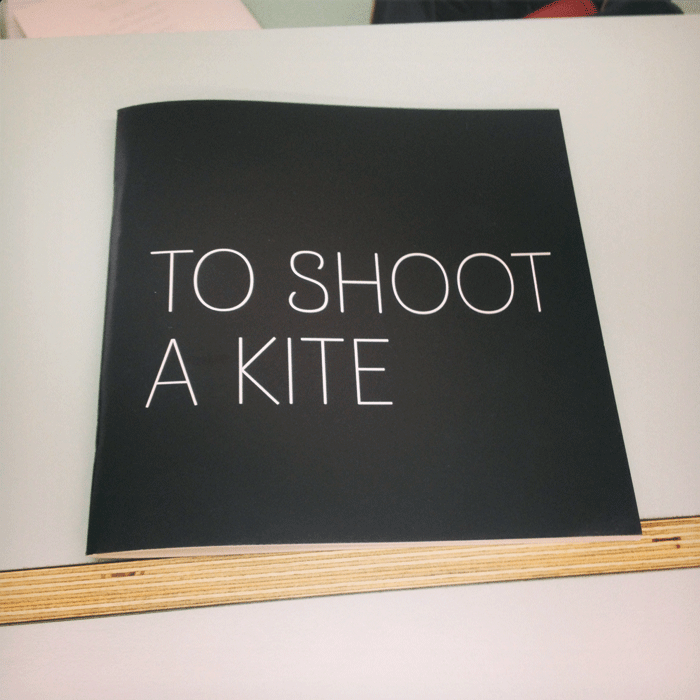
Curatorial Statement:
The best activism is equal parts love and equal parts anger.
- Jackie Sumell [1]
In June 2012, Sesame Street introduced Alex, a new character on its online interactive program Little Children, Big Challenges. In the short educational video, Alex admits his father is in prison after skirting questions from his friends on his whereabouts [2]. What does it say about the United States when one of its most popular early-childhood education programs finds the issue of incarceration widespread enough to incorporate it into its curriculum? Alex is one of approximately 2.7 million American children who have a parent currently incarcerated (one in every 28 children), two-thirds of whom are in for nonviolent crimes [3].
According to data published by the Prison Policy Initiative in March 2014, there are currently more than 2.4 million people being held in U.S. incarceration facilities, including state and federal prisons, juvenile correctional facilities, local jails, Indian County jails, military prisons, immigration detention facilities, civil commitment centers, and prisons in the U.S. territories [4]. This rate is greater than any other country: of the approximately 10 million people who have been sentenced around the world, the U.S. incarcerates close to a fourth (2.4 million), followed by China (1.65 million) and Russia (0.81 million) [5]. Constituting 5% of the world's population, the U.S. holds approximately 25% of its inmates [6]. Louisiana is the "world's prison capital" with 1 in 86 adults serving time, close to twice the national average [7]. This policy comes at a hefty cost: in 2013 the federal system spent $7.9 billion on prisoner expenses [8]. In New York City alone, the cost per prisoner in 2012 was an astounding $167,731 owing to the remote location of the city's jail facilities on Rikers Island, where the inmates are far out of sight and the price to transport them to the city courts is high [9]. Finally, the broader picture of the U.S. government's priorities is placed in sharp focus when recognizing that prisons account for 10% of the recent budgets, while higher education dropped below 8% [10].
Let us back up a bit and trace how the U.S. came to earn the dubious title of "most incarcerated in the world." Regardless of what fear mongers within the penal system and the media maintain publicly, our prison population increased from roughly 350,000 to 2.4 million in the past 25 years not because of heightened crime rates, but due to policy changes [11]. In fact, 92% of all federal prisoners are in for nonviolent crimes, as are 48% of all state prisoners [12]. What to make of this data? To understand what caused this significant jump we have to look back to several events in recent history, namely the early 1980s when Ronald Reagan declared the War on Drugs. This policy inflated the budgets of federal law enforcement agencies tenfold [13]. The 1986 Anti-Drug Abuse Act law introduced mandatory minimum sentences (5 to 10 years) for the distribution of cocaine, with a crucial 100-to-1 distinction between crack cocaine that was linked to use by African Americans, and powder cocaine that was associated with whites [14]. This distinction led to what Michelle Alexander has termed in her seminal book by the same name "The New Jim Crow" era, where black men were disproportionately prosecuted for drug offenses due to the elevated mandatory sentence for crack, thus creating a new racial caste system [15]. One in 12 working-aged Black men and one in 36 working-aged Hispanic men are in prison, while white men of the same age represent a mere fraction at one in 87 [16]. This is a staggering statistic. An individual facing sentencing in the U.S. for a minor drug offense is likely to serve a longer prison sentence than a convicted murderer will in other countries [17]. This law was exacerbated by Bill Clinton's 1994 federal "Three Strikes and You're Out" law, which mandated life sentences in some cases for third-time offenders. In total, over 31 million people have been arrested since the War on Drugs campaign was initiated [18].
In addition to the War on Drugs, two more reasons are worth mentioning to account for the increase in incarcerated individuals. First, the last two decades have revealed a strong inclination to detain both documented and undocumented immigrants who constitute more than half of all federal prosecutions[19]. Laws put into place by the government (the Illegal Immigration Reform and Immigrant Responsibility Act of 1996) have mandated the detention of immigrants regardless of whether they were deemed not dangerous or a flight risk, resulting in a 500% increase of detainees[20]. Second, the rise of the prison industrial complex – a term that describes the conflation of business and government interests – partially accounts for the motivations behind keeping sentencing rates high and alternative solutions out of the system. A financial interest begins to inform the setting and operations of privatized prisons, which in turn incentivizes the stakeholders to keep the extreme policies in place. In this era, therefore, prisons equal money [21].
Today prisons are mostly located in economically depressed rural areas, where the incarcerated are hidden out of sight, and thus, out of the minds of the broad public. Once they are released from prison, they are faced with a new set of challenges where their lives are still very much informed by their recent experiences: they are marked as 'criminals' and can seldom shake the 'prison label' that is attached to them from the moment they enter the criminal justice system, whether ultimately sentenced or not [22]. Once branded a felon, individuals are often faced with hiring discrimination, and many are also disqualified from receiving federal welfare benefits, including food stamps, public housing, and healthcare. It is thus no surprise that recidivism rates are high, with those labeled felons finding themselves back in the prison system [23].
The excessive television coverage of the War on Drugs typically took its cues from the Reagan administration's race-driven ideology that positioned crack cocaine as an epidemic sweeping through neighbourhoods across the U.S., even though the drug's pervasiveness has been documented as becoming established mostly after the launch of the administration's campaign. The Black community's recourse to cocaine in crack form therefore positioned them as the top offenders in this "war," where they were (and are) often associated with criminal activity [24]. Another campaign of stigmatization would ensure common usage of the term "illegal" in the media when referring to immigrants. "Illegal" is perceived as a racially coded and dehumanizing label that reduces the individual to a single negative abstraction. Motivated by political strategy, the word has been used to denote difference and criminalize non-citizens [25].
What is, therefore, our primary source material for conjuring an image of the "criminal"? For many it is likely television, films, and other elements of pop culture that prioritize tropes to anchor storylines at the cost of factual context. They are dominant platforms of communication that categorically flatten situations, overlook details and disregard the systemic conditions that are at the core of their narratives. As a result, they perpetuate common racial biases and position the criminal – usually Black or Latino – as the "Other," who should be prosecuted and locked away regardless of circumstance.
This brief overview of the American detention system over the past few decades leads us to the works included in the exhibition To Shoot A Kite. In prison-speak, a 'kite' represents notes or letters and 'to shoot a kite' means to send a message [26]. The projects included in this show, and further detailed throughout this catalogue, represent the work of a select group of artists who have set out to relay the severe conditions of prisoners and expose this broken system. In so doing, they are reframing the narrative surrounding the incarcerated—providing a platform for public expression and advocating for change both from within and outside the prison system. Each project takes on a different form – from documentation and data visualization to offering services and advocacy. They provide a link between the incarcerated and the outside world, portraying their conditions, and personalizing the abundant yet anonymous data about the prison system.
This exhibition by no means represents an exhaustive account of the incredible work being done by creative individuals on behalf of the incarcerated and formerly incarcerated. As our society's official priorities continue to shift away from delivering social services, motivated individuals take up the task of filling the needs of underserved and overlooked communities. These projects serve as a mere sample of thousands of projects by artists and activists who have dedicated their work to raising awareness, and bringing about reform where political leadership has either failed to address the problem or been complicit in its very formation [27].
Ashley Hunt's Corrections Documentary Project is a comprehensive body of work about the prison industrial complex, primarily examining the politics and economics of the massive increase of the U.S. prisoner population since the 1970s. The project is comprised of nine videos and two maps that reveal the manner in which this system helps structure and preserve the racial and economic hierarchies of today's society. In 2008, a group of collaborators – Temporary Services, Tamms Year Ten and Sarah Ross – sent letters to every prisoner in the now-shuttered Illinois Tamms Supermax Prison, inviting them to partake in Supermax Subscriptions—a program that exchanges frequent flier miles with magazine subscriptions for prisoners in long-term solitary confinement. In offering this service, the project exposed the inhumanity of maximum-security facilities, and enabled individuals to infiltrate these secluded confines to make a meaningful contribution to the lives of those often forgotten inside. In the ongoing series The Last Supper, Julie Green paints last-meal requests on secondhand ceramic plates, telling the stories of death row inmates through food. This ritual serves a humanizing representation – a kind of memorial – where their final choice is permanently recorded. Lockdown is a project that presents a fragment of the population of 2.4 million people locked away in U.S. prisons. The eleven photo portraits and interview excerpts were recorded during one-hour visits Dread Scott made to a prison and at a meeting with youth who had been through the system. The project depicts a group that is acutely aware of how they got to the position they are in, as well as of the politics driving the criminal justice system. The Prison and Neighborhood Arts Project (P+NAP) connects teaching artists and scholars with incarcerated men through semester-long humanities classes, workshops and guest lectures at Stateville Correctional Center, a maximum-security state facility in Greater Chicago. Collaboration is at the core of the program, where free and incarcerated artists work together to critically communicate to a broad public the issues of imprisonment, isolation, and social segregation. Members of the collaborative Lucky Pierre began the ongoing video project Final Meals in 2003 based on the now-defunct last meals archive on the Texas Department of Criminal Justice's website. In the project, they prepare each requested meal and film a volunteer sitting with it for 25 minutes. By setting up this intimate configuration where a free person is faced with the final request of an individual whose death was sanctioned by the state, Lucky Pierre creates a living monument to the deceased. In 2002, Jackie Sumell sent Herman Wallace, a man in long-term solitary confinement, a letter asking: "What kind of a house does a man who has lived in a 6 ft. x 9 ft. cell for over 30 years dream of?" This sparked a correspondence between the two through which Wallace describes in detail what his future home might include. This communication evolved into a strong friendship that served as the heart of Sumell's campaign to not only build Wallace's dream home, but also fight for his ultimate release from prison.
These projects and numerous others – whether working directly with the incarcerated community or making a gesture in their name – embody the strength in creative communication and advocacy on behalf of those who have been marked by governing entities as worthy of less than the rest of us. Imagine if the U.S. were to change its policies on its prosecution of drug offenders, resolving to send defendants to rehabilitation programs rather than prisons? Or if instead of increasing funding to law enforcement agencies, resources would be diverted to drug treatment and anti-drug education? Further yet, what if state-funded education programs returned to prisons to provide inmates with training that could better position them to find a job upon their release? And once they are finally freed – already struggling with the psychological effects of the isolating conditions they have endured – why not help them reintegrate into society, rather than systematically keep them excluded? Could we bring our society to the position where when the formerly incarcerated step outside the prison gates, there is acceptance that their debt to us has been fully paid? In many communities around the country, a significant shift in public opinion must occur so that the dehumanization of the incarcerated can end. And while there are numerous solutions that may alleviate the situation, it is important to remember that the justice system in the U.S. is decidedly broken. Thus only a truly radical break in our society can likely bring an end to mass incarceration in America.
To Shoot A Kite does not provide any answers to the complex system laid out in this essay, but rather raises many questions. With creative means, these artists communicate to us the conditions of incarcerated individuals, so that we can see the true nature of the cruel and unjust penal system buried in our midst. It is our time to speak up for an end to the discrimination of a large part of our populace, so that everyone has a fighting chance at the opportunities that have long been championed by our society. After everything we have heard and all that we have seen, how can we look away?
- Yaelle Amir, May 2014
_____
Footnotes:
[1] Jackie Sumell, The House that Herman Built <http://hermanshouse.org/media> Accessed 17 April 2014.
[2] "Little Children, Big Challenges: Incarceration." <http://www.sesamestreet.org/parents/topicsandactivities/toolkits/incarceration> Accessed 16 April 2014.
[3] The Pew Charitable Trusts, Collateral Costs: Incarceration's Effect on Economic Mobility (Washington, DC: The Pew Charitable Trusts, 2010), 4. This statistic also reveals a long-term effect, as "A child's prospect for upward economic mobility is negatively affected by the incarceration of a parent," Pew, 5.
[4] Peter Wagner and Leah Sakala, "Mass Incarceration: The Whole Pie," Prison Policy Initiative, 12 March 2014<http://www.prisonpolicy.org/reports/pie.html>.
[5] Roy Walmsley, "World Prison Population List: 9th Edition," International Centre for Prison Studies, University of Essex, May 2011<http://www.idcr.org.uk/wp-content/uploads/2010/09/WPPL-9-22.pdf>.
[6] Charlie Savage, "Sentences of 8 Are Commuted in Crack Cases," New York Times, 19 December 2013: A1.
[7] Cindy Chang, "Louisiana is the world's prison capital," The Times-Picayune, 13 May 2012 <http://www.nola.com/crime/index.ssf/2012/05/louisiana_is_the_worlds_prison.html>.
[8] Savage, A1.
[9] Jake Pearson, "In NYC, Each Inmate Costs Almost As Much As An Ivy League Tuition," The Huffington Post, September 30, 2013 <http://www.huffingtonpost.com/2013/09/30/nyc-inmate-cost-ivy-league_n_4015836.html>.
[10] John Tierney, "For Lesser Crimes, Rethinking Life Behind Bars," New York Times, 12 December 2012: A1.
[11] Michelle Alexander, The New Jim Crow (New York: The New Press, 2012), 93.
[12] Maia Szalavitz, "Viewpoint: What's Missing from Sesame Street's Parents in Prison Toolkit," TIME Magazine, 13 June 2013 <http://healthland.time.com/2013/06/13/viewpoint-whats-missing-from-sesame-streets-parents-in-prison-toolkit>.
[13] Alexander, 49.
[14] Under the Fair Sentencing Act of 2010, this disparity was reduced from a 100:1 to 18:1 weight ratio and eliminated the five-year mandatory minimum sentence for simple possession of crack cocaine.
[15] "Like Jim Crow (and slavery), mass incarceration operates on a tightly networked system of laws, policies, customs, and institutions that operate collectively to ensure the subordinate status of a group largely defined by race." Alexander, 13.
[16] Pew, 4. In some major cities in the U.S., as many as 80% of African American men have criminal records. Alexander, 7.
[17] Alexander, 89. In a significant step towards correcting this policy, Attorney General Eric Holder directed prosecutors in August 2013 to cease listing quantities in minor drug offenses so as to avoid meeting the strict mandatory minimum laws. Savage, A1.
[18] Alexander, 60.
[19] Doris Meissner, Donald M. Kerwin, Muzaffar Chishti, and Claire Bergeron, Immigration Enforcement in the United States: The Rise of a Formidable Machinery (Washington, DC: Migration Policy Institute, 2013), 7.
[20] Meissner, 11.
[21] This aspect of the penal system is examined at length in Ashley Hunt's essay in this catalogue.
[22] Alexander, 94.
[23] The most recent data by the Bureau of Justice Statistics was released in 2007 <http://www.bjs.gov/index.cfm?ty=tp&tid=17>.
[24] For more on the media's role in shaping the War on Drugs, see Jimmie L. Reeves and Richard Campbell, Cracked Coverage: Television News, the Anti-Cocaine, and the Reagan Legacy (Durham, NC: Duke University Press, 1994). Michelle Alexander writes about a 1995 survey in which people were asked to describe a drug user – 95% pictured a Black user: Alexander, 106. Further, Ashley Hunt has stated: "if a public is already predisposed to see black people as criminal, they are not going to be shocked when seeing them treated like criminals." Natascha Sadr Haghighian and Ashley Hunt, "Representations of the Erased," in exh. cat., No Matter How Bright the Light, the Crossing Occurs at Night, ed. Sladja Blazan and Anselm Franke (Berlin: Köln König, 2006), 8-9.
[25] Read more about the "Drop the I-Word" campaign at http://colorlines.com/droptheiword
[26] A Prisoner's Dictionary <http://aren.org/prison/documents/dictionary/words.htm> Accessed 29 March 2014. I first learned of this term via the project Thousand Kites by the Kentucky-based collective Appalshop that produces performance, web, video and radio shows on the topic of the U.S. prison system: http://thousandkites.org
[27] See "Resources" section in the exhibition catalogue for a short list of additional services and organizations.
Press:
In Chelsea, a Pedestrain-Friendly Night of Art, by Johnny Magdaleno, New York Times Style Magazine
Yaelle Amir Curates Art Exhibition on Our Prison Systems, an interview with Alex Teplitzky, Creative Capital blog